In the vast theater of the sky, nature occasionally stages one of its most dramatic spectacles: aerial combat between birds of prey. These mid-air raptor battles are rare moments when the raw power, tactical intelligence, and evolutionary perfection of these predators are displayed in breathtaking clarity. Unlike choreographed nature documentaries where multiple takes and careful editing create seamless narratives, witnessing such encounters in real time delivers an unfiltered, adrenaline-pumping experience that few wildlife observations can match. The sudden screech, the flash of talons, the precise aerial maneuvers – these battles represent nature at its most primal and magnificent, offering observers a glimpse into the complex lives of these apex aerial predators and the evolutionary arms race that has shaped them over millions of years.
The Initial Shock of Discovery
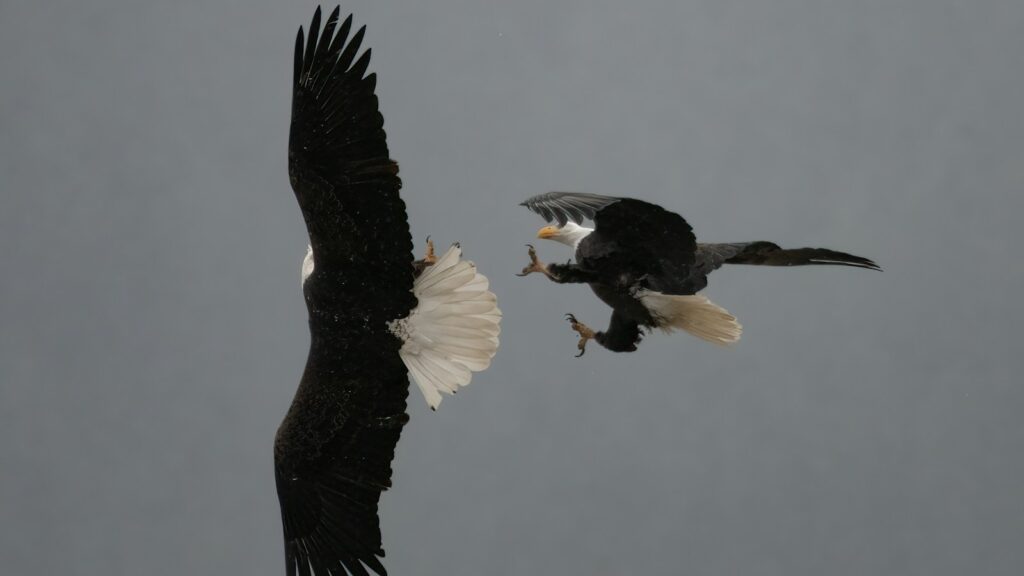
Most raptor battles begin with little warning, transforming an ordinary day of birdwatching or outdoor activity into an extraordinary wildlife encounter. One moment you’re scanning peaceful skies, and the next, your attention is jolted by movement, unusual calls, or the distinctive silhouettes of large birds in unusual proximity. The human brain immediately recognizes something unusual is occurring – predators that normally maintain careful distance from each other are suddenly locked in the same airspace. This moment of realization creates a cognitive shift; your normal perception of birds as gentle sky-drifters is instantly replaced by the understanding that you’re witnessing powerful predators engaged in serious conflict. Even experienced birders report feeling their heartbeat accelerate and a rush of excitement as they realize they’ve stumbled upon this rare natural phenomenon.
The Unmistakable Soundtrack
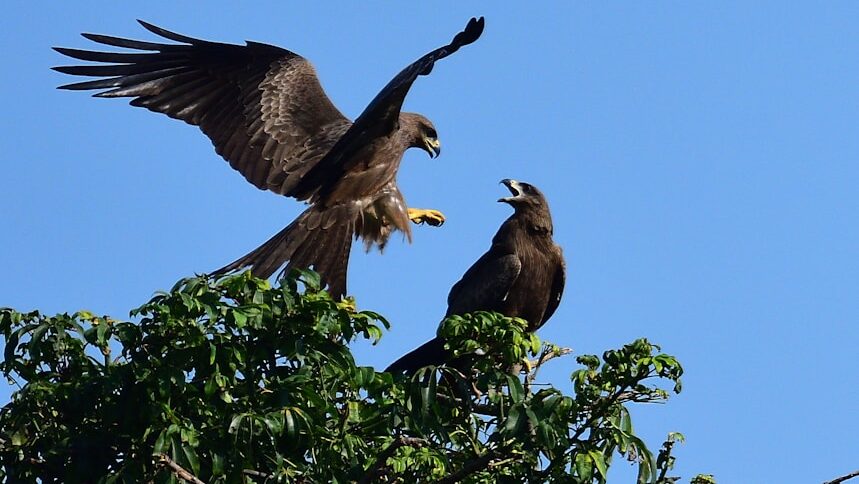
The auditory experience of a raptor battle often precedes the visual, with distinctive vocalizations that differ markedly from normal calls. Bald eagles emit piercing, rapid-fire screams during territorial disputes that sound nothing like their usual communication patterns. Red-tailed hawks release shrill, frantic kee-aaah calls that rise in intensity as the confrontation escalates. These battle cries serve multiple purposes – they’re warnings to the adversary, expressions of dominance, and signals of distress or aggression that telegraph the bird’s intentions. The sound dimension adds a visceral layer to the experience, triggering an instinctive response in human observers. Scientists note that these combat vocalizations are specifically evolved to carry across long distances and communicate aggression in ways that regular contact calls do not, making them instantly recognizable even to untrained human ears.
Understanding the Stakes
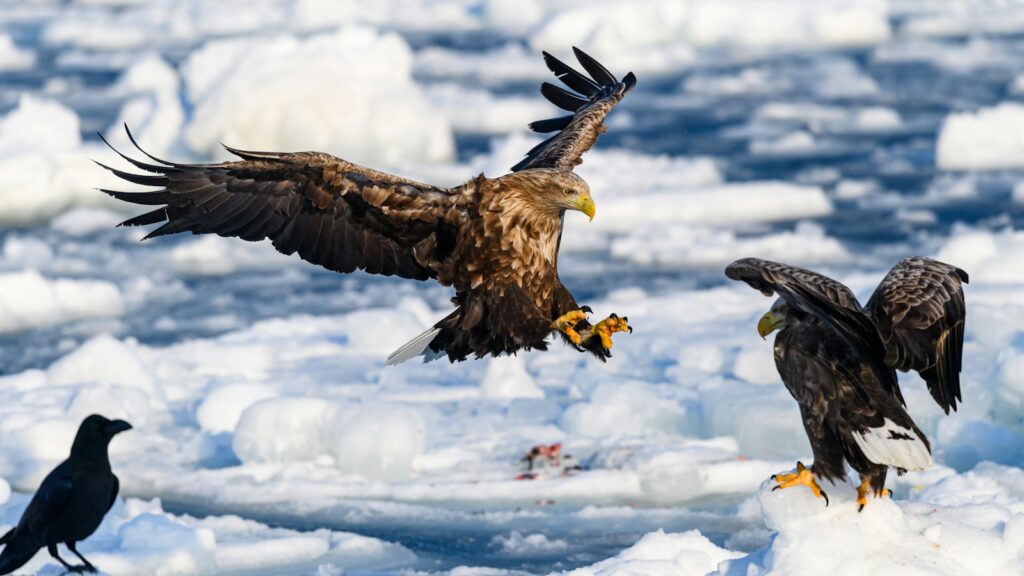
Raptor battles aren’t random acts of aggression but carefully calculated encounters with genuine survival implications. Territory defense represents one of the most common causes, particularly during breeding season when prime hunting grounds and nesting sites become fiercely contested resources. Food competition drives many dramatic confrontations, especially when one raptor attempts to steal prey from another – a behavior known as kleptoparasitism that’s common among bald eagles and other opportunistic species. Mating rights motivate some of the most intense battles, with males fighting to impress females or defend established partnerships. The participants aren’t engaged in sport or display – these encounters involve genuine risk of injury or death, especially when size disparities exist between the combatants. Understanding these stakes transforms what might otherwise appear as simple animal aggression into a complex ecological drama with genuine evolutionary significance.
The Aerial Maneuvers

The physical ballet that unfolds during raptor combat showcases flying abilities that push the boundaries of avian capability. Peregrine falcons can reach speeds exceeding 200 mph in tactical dives aimed at rivals, creating aerial shock waves visible in the disturbed feathers of their targets. Red-tailed hawks perform barrel rolls to evade attackers while maintaining visual contact, a maneuver requiring extraordinary spatial awareness and muscle control. Aerial grappling – where birds lock talons and spin downward in what’s called a “death spiral” – represents one of the most dangerous tactics, requiring split-second timing to release before impact. Eagles engage in complex vertical combat where they alternate between height advantage positions, sometimes climbing thousands of feet while jockeying for the superior position. These maneuvers occur with such speed that human observers often struggle to track the action, with the birds covering vast distances in seconds and changing direction with g-forces that would incapacitate human pilots.
Species-Specific Battle Techniques
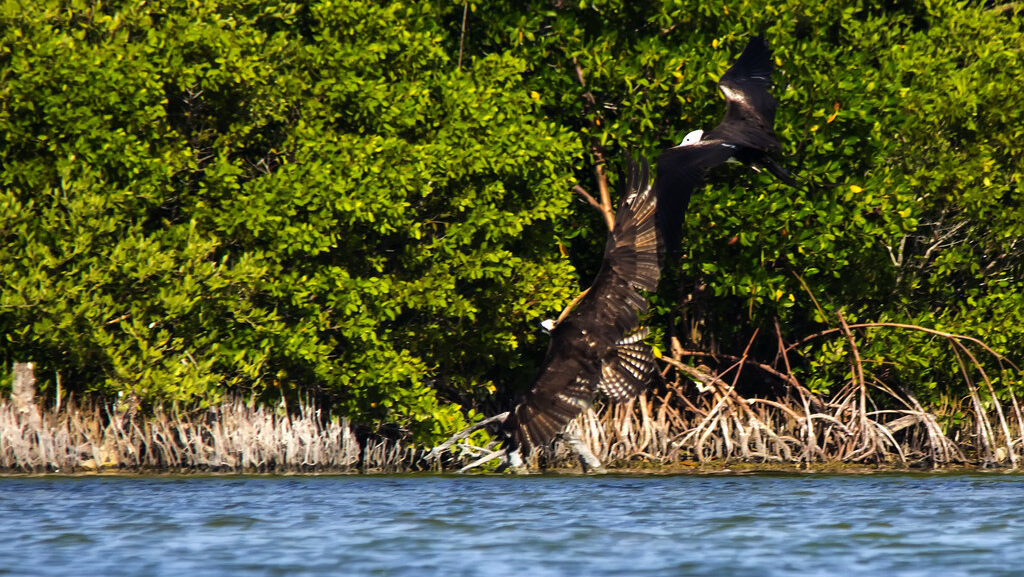
Different raptor species employ distinctive fighting styles shaped by their evolutionary adaptations and ecological niches. Ospreys, specialized fish-hunters with reversible outer toes and water-repellent feathers, fight defensively, preferring evasion and spectacular diving escapes over direct confrontation. Bald eagles rely on their substantial size advantage in most encounters, using intimidation displays and their powerful 400 psi grip to overpower smaller rivals. Cooper’s hawks and other woodland accipiters leverage their extraordinary maneuverability among trees, using foliage as cover during battles and executing tight turns that larger birds cannot match. Golden eagles employ perhaps the most brutal technique – direct stooping attacks from great heights that can generate impact forces sufficient to break bones on contact. These specialized approaches demonstrate how combat behavior is directly linked to each species’ physical capabilities and hunting strategies, creating distinct “fighting styles” as recognizable as different martial arts.
The Psychological Dimension

Beyond the physical confrontation, raptor battles involve sophisticated psychological warfare that influences outcomes as much as physical prowess. Dominance displays often precede physical contact, with birds fluffing feathers to appear larger, performing exaggerated wing-spreading, and engaging in vocal intimidation. Bluffing behavior is common, with smaller birds sometimes successfully driving off larger ones through sheer aggression and confidence. Timing attacks to coincide with moments of vulnerability – such as when a rival is carrying prey or has just eaten and is heavier in flight – demonstrates tactical thinking that borders on cunning. Most battles end without serious injury because one bird recognizes defeat and strategically withdraws, having assessed that the potential cost outweighs the benefit of continued fighting. This psychological dimension reveals cognitive complexity in these predators that goes far beyond instinct, showing evidence of situational assessment, risk calculation, and individualized decision-making.
Weapons of Aerial Warfare
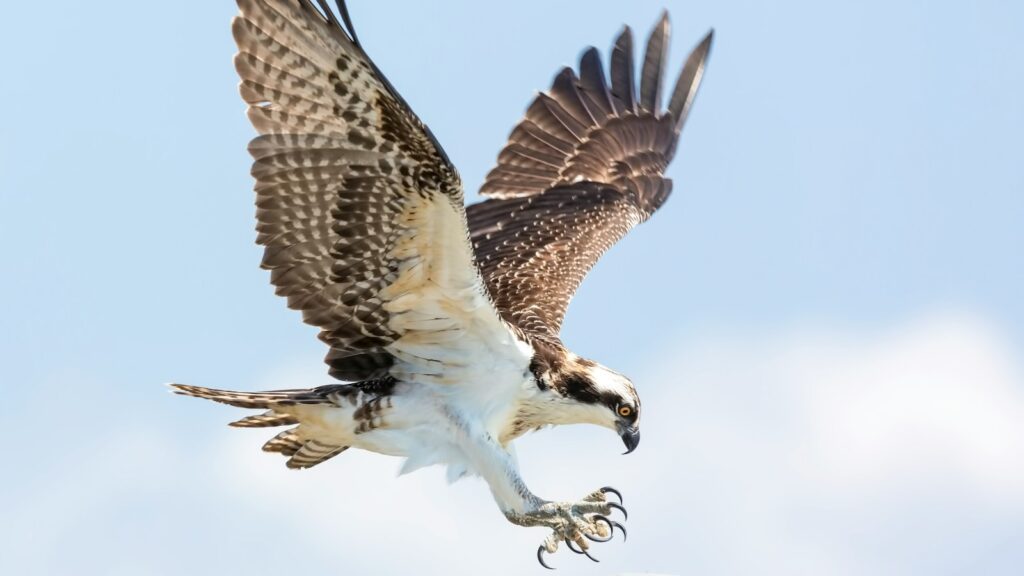
The primary weapons in raptor combat reveal extraordinary evolutionary specialization for both hunting and fighting. Talons represent the most formidable threat, with rear talons on species like golden eagles measuring over three inches long and capable of exerting pressure exceeding human hand strength by several factors. Beaks serve as precision weapons for vulnerable areas, particularly effective when targeting the back of the head or neck where feather protection is minimal. Wings, while primarily flight instruments, become offensive battering tools during close combat, with the leading edge reinforced with bone and muscle capable of delivering stunning blows. Even the bird’s tail becomes a weapon of sorts, functioning as a rudder for rapid direction changes and stabilization during complex maneuvers. The precision with which these birds deploy their natural armaments demonstrates neurological control and spatial awareness that rivals the most sophisticated human athletes or martial artists.
Interspecies vs. Intraspecies Conflicts
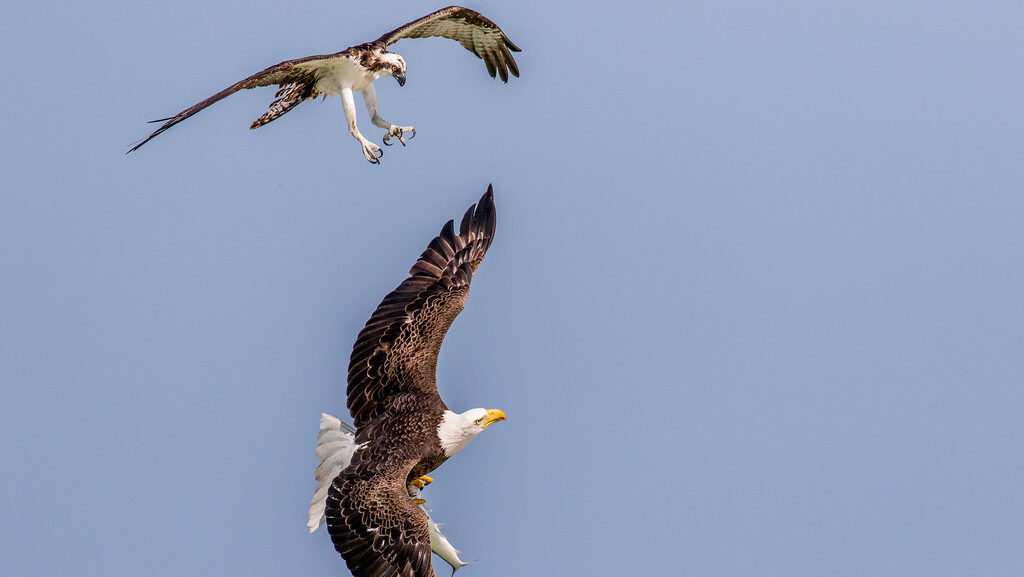
Battles between different raptor species (interspecies) differ markedly from conflicts within the same species (intraspecies), each following distinct patterns and rules of engagement. Intraspecies conflicts typically involve more ritual and less lethal intent, functioning primarily to establish dominance hierarchies within populations without reducing breeding numbers. Red-tailed hawks fighting other red-tails, for instance, follow predictable escalation patterns with opportunities for submission displays that end combat before serious injury. Interspecies conflicts, particularly between competitors for the same ecological niche, tend toward greater violence and higher injury risk, as the evolutionary restraints on killing members of one’s own species don’t apply. Peregrine falcons attacking great horned owls that threaten their nesting sites show little restraint, while conflicts between eagles and ospreys over fishing territories follow different rules than eagle-on-eagle territorial disputes. These differences reveal sophisticated social programming that distinguishes between competition within a gene pool versus ecological competition with other species.
The Human Emotional Response

Witnessing a raptor battle triggers complex emotional responses in human observers that reveal our deep evolutionary connections to predator behavior. The initial reaction typically combines excitement with anxiety – the thrill of witnessing rare behavior coupled with concern for the birds’ welfare. Many observers report feeling conflicted about “taking sides” in the encounter, often irrationally rooting for the smaller combatant or the one perceived as the defender rather than aggressor. Time perception frequently alters during observation, with witnesses reporting that battles seemed to unfold in slow motion despite their objective brevity, a phenomenon psychologists attribute to the brain’s heightened information processing during high-stimulation events. Perhaps most interestingly, people consistently describe feeling “privileged” after witnessing these encounters, recognizing they’ve seen something few humans ever experience – a primordial struggle normally hidden from human eyes. This emotional resonance speaks to our species’ long evolutionary history of observing and interpreting predator behavior as both threat and model.
Photographic Challenges

Capturing raptor battles through photography presents extreme technical challenges that test the limits of both equipment and photographer skill. The unpredictable nature of these encounters means photographers must react within seconds, often having little time to adjust settings for rapidly changing light conditions and distances. Focus tracking becomes critical as birds move at speeds exceeding 100 mph across three-dimensional space, requiring cameras with sophisticated predictive autofocus systems and photographers with exceptional panning technique. Exposure challenges abound when birds move from bright sky to darker backgrounds or when dramatic lighting differences exist between combatants at different altitudes. Many professional wildlife photographers consider successful raptor battle images among their most challenging achievements, often requiring thousands of failed attempts before capturing that perfect moment of talon-to-talon contact or mid-air reversal. The rarity of these encounters compounds the difficulty, as photographers cannot simply return the next day to try again with adjusted techniques.
The Aftermath
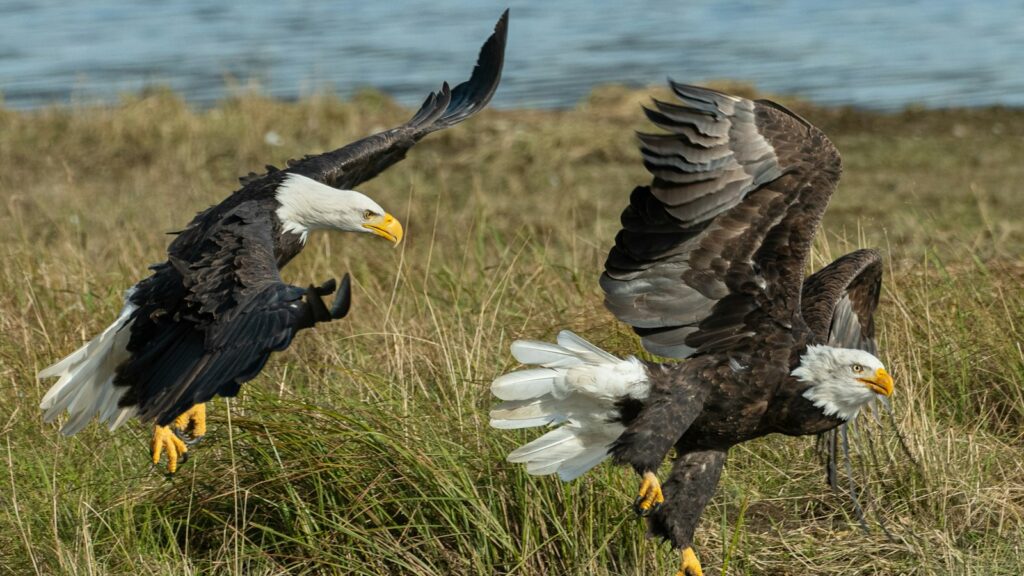
The conclusion of raptor battles reveals much about their purpose and the birds’ remarkable resilience. Most confrontations end without serious injury – one bird clearly establishes dominance or territory rights, and the other withdraws to conserve energy for future conflicts or hunting. In cases where physical contact occurred, birds often perform immediate self-assessment behaviors, testing injured wings with careful stretching or adjusting flight patterns to compensate for minor damages. Successful defenders frequently perform victory displays after the intruder retreats, soaring in prominent circles above their territory or perching conspicuously while vocalizing. The most serious battles occasionally result in injuries requiring rehabilitation intervention, with wing damage and eye injuries being the most common serious outcomes. Remarkably, many raptors can recover from seemingly devastating injuries – wildlife rehabilitators report cases of birds healing from puncture wounds or broken bones that would permanently disable other animals, demonstrating the extraordinary physiological resilience these aerial predators have evolved.
The Conservation Perspective
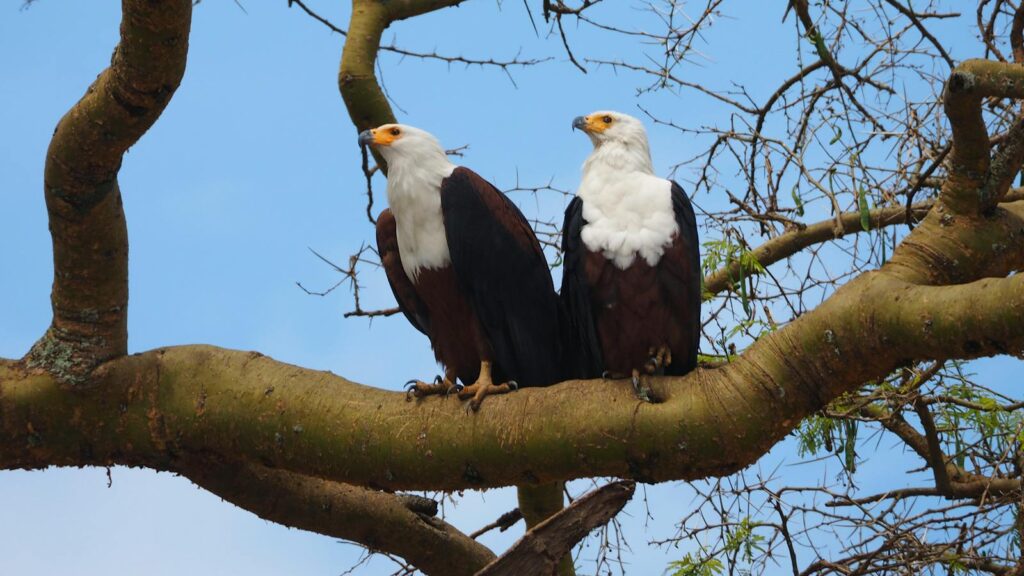
Raptor battles, while dramatic, play important roles in maintaining healthy ecosystems and population dynamics. These conflicts naturally distribute breeding territories across landscapes, preventing overcrowding in prime habitat and ensuring genetic diversity through geographic spread of breeding pairs. Natural selection operates through these encounters, with birds that possess superior strength, agility, and tactical intelligence gaining reproductive advantages by securing better territories. Human activities that concentrate raptors in artificial ways – such as feeding stations or reduced habitat forcing birds into smaller areas – can increase battle frequency and intensity beyond natural levels, potentially causing population stress. Conservation biologists use battle frequency as one metric of population health; excessive conflict may indicate habitat compression or resource scarcity, while too little territorial defense might signal population decline or behavioral disruption. Understanding the ecological role of these conflicts helps inform conservation strategies that preserve not just the birds themselves but the complex behavioral dynamics that keep their populations resilient.
How to Respond If You Witness a Battle

Ethical witnessing of raptor battles requires knowledge of appropriate human responses that prioritize bird welfare while respecting the natural process. Maintaining distance represents the most crucial guideline – approaching battling raptors can distract them during critical moments when their attention should be fully focused on their aerial opponent, potentially causing accidents or injuries. Noise discipline matters significantly, as sudden sounds can startle birds during precarious flight maneuvers, turning a controlled conflict into a dangerous situation. If you discover injured birds following a battle, contacting wildlife authorities rather than attempting personal intervention provides the best outcome, as raptor rehabilitation requires specialized permits and expertise. Documentation through photographs or field notes contributes valuable data to scientific understanding, particularly if submitted to citizen science platforms like eBird or local raptor research organizations. The ethical observer prioritizes witness over interference, understanding that these conflicts represent natural processes that have evolved over millions of years.
Conclusion
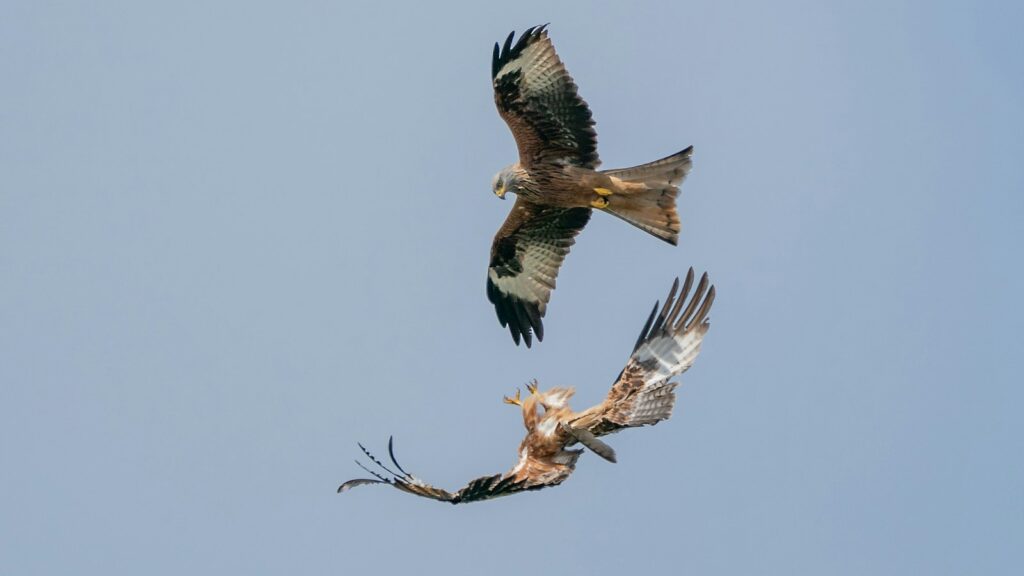
In witnessing a mid-air raptor battle, we glimpse a world of aerial combat perfected through evolutionary time – a world where physical capabilities, tactical intelligence, and split-second decisions determine survival and reproductive success. These dramatic encounters remind us that beneath the seemingly peaceful soaring of birds against blue skies lies a complex social order maintained through tests of strength and will. For the fortunate few who experience these moments, the memory often becomes a touchstone – a reminder of nature’s raw power and the extraordinary adaptations that allow these predators to rule the skies. In a world increasingly separated from natural processes, such encounters reconnect us to the authentic wildness that continues to unfold above our heads, largely unseen but vital to the ecological systems that support all life.
